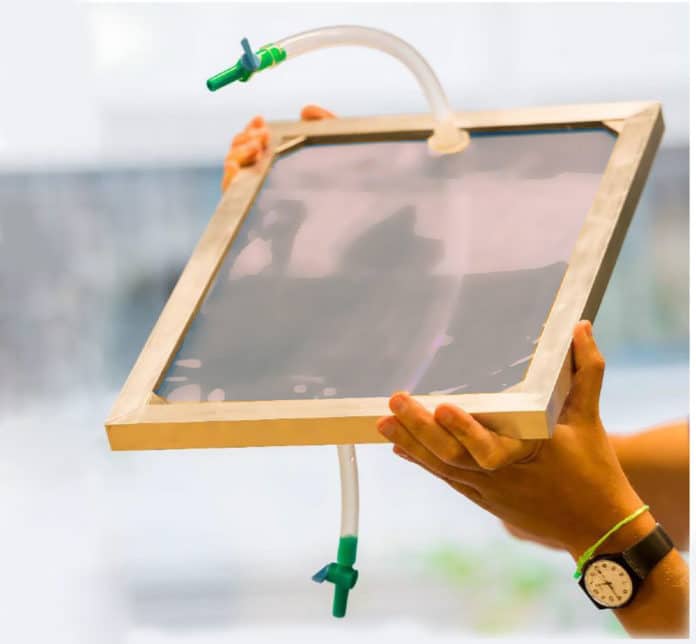Access to clean and safe drinking water is essential for life. However, water contamination due to environmental conditions and poor waste management in certain areas of the world represents a serious problem in accessing clean and safe drinking water. This problem is especially critical in electricity-poor regions, where advanced water purification methods are absent. The unsafe water supply is linked to the transmission of diseases such as cholera, diarrhea, dysentery, and typhoid.
Now, a team of scientists led by László Forró at EPFL has developed a new water purification filter that combines titanium dioxide (TiO2) nanowires and carbon nanotubes powered by nothing but sunlight to efficiently decontaminate water.
The TiO2 nanowires by themselves can efficiently purify water in the presence of sunlight. But interweaving the nanowires with carbon nanotubes forms a composite material that adds an extra layer of decontamination by pasteurizing the water, killing off human pathogens such as bacteria and large viruses.
The contaminated water enters via a tube at the top, passes through a multi-layered filter material sandwiched between two sheets of glass, and exits through a tube at the bottom. When ultraviolet light from the visible spectrum of sunlight hits the filter, it causes the composite to produce a group of molecules called Reactive Oxygen Species. These include hydrogen peroxide, hydroxide, and oxygen and are known to be effective pathogen killers.
The filter has already been successfully tested on water containing E. Coli, bacteria, the “gold standard” for bacterial survival studies. The results indicated that it should also have no problem eradicating other pathogens. The water filter is exceptionally adept at removing all the pathogens from water and shows promising results even for eliminating micropollutants, such as pesticides, drug residues, cosmetics, etc.
“In a close collaboration between chemists, physicists, and biologists, we have developed a very efficient water purification device, which does not need any energy source but sunlight,” says Forró. “Our prototype can supply clean drinking water even in remote places to small populations and could be easily scaled up. It is a great achievement, and an important “side-product” of this project is that it has attracted a large number of talented and motivated students who care for environmental issues, for sustainability.”
